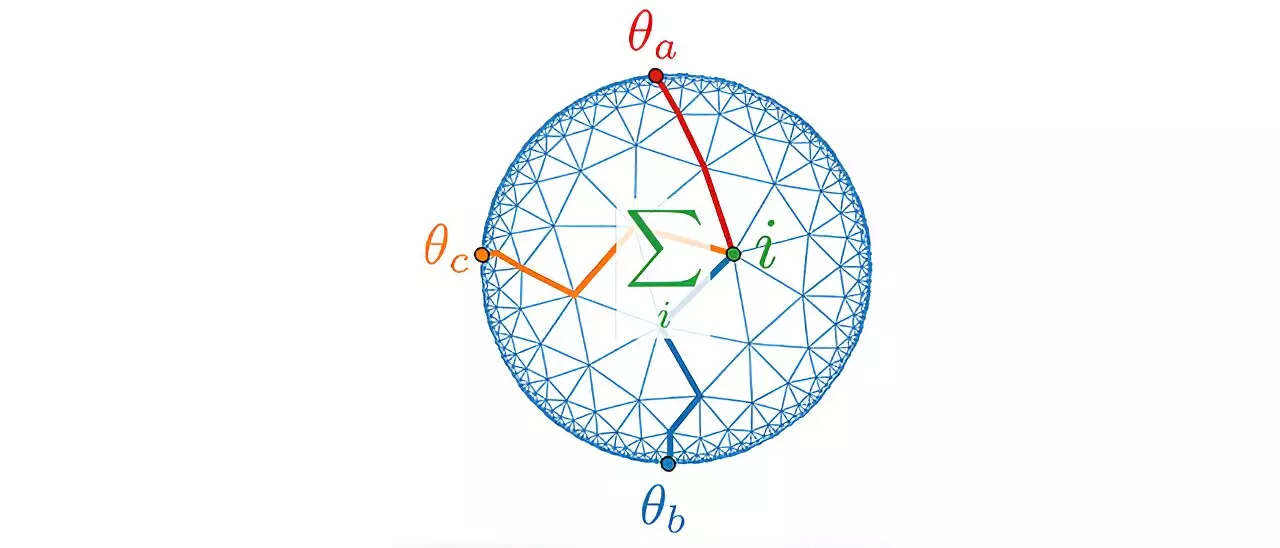Gravity has long fascinated scientists, prompting extensive investigations into its nature and implications across varied scales. While classical physics enables us to understand gravitational forces influencing large-scale phenomena—such as planetary orbits and tidal dynamics—there exists a significant challenge in reconciling gravity with quantum mechanics. This intricate dance between gravity and the quantum world stands as a frontier in theoretical physics, demanding new perspectives and methodologies.
Traditionally, gravity has been described through Einstein’s General Theory of Relativity, which excels at large distances where masses are substantial, and their gravitational interactions palpable. However, as we dive into the quantum realm, scenarios such as the Big Bang or the enigmatic interiors of black holes emerge, where the conventional rules governing gravity appear to falter. Professor Johanna Erdmenger, who leads Theoretical Physics III at the University of Würzburg, emphasizes the necessity of unlocking the quantum characteristics of gravity to make sense of such phenomena. The quest to derive a comprehensive theory that seamlessly incorporates gravity at all scales is ongoing, representing an intellectual odyssey filled with complexities and potential breakthroughs.
A pivotal concept in modern theoretical physics that aims to bridge this gap is the AdS/CFT correspondence. This groundbreaking theory posits that gravitational phenomena in a higher-dimensional realm can mirror quantum behaviors in a lower-dimensional space at its boundary. The Anti-de-Sitter (AdS) space, characterized by its inward curvature, provides a framework for this correspondence, while Conformal Field Theory (CFT) describes systems where physical properties remain invariant across different spatial scales.
Initially intimidating in its mathematical sophistication, AdS/CFT offers profound insights into complex gravitational interactions by simplifying them through relevant quantum equations. The analogy of a hologram is often employed, positing that just as a two-dimensional hologram can yield a three-dimensional image, the quantum actions on the boundary reflect the intricate gravitational dynamics within the curved space.
Capitalizing on the AdS/CFT correspondence, Erdmenger and her research team have pioneered a novel approach to verify its predictions through experimental means. Their innovative method employs a branched electrical circuit that simulates curved spacetime. This circuit operates under the premise that the electrical signals relayed at various junctions mirror the gravitational interactions occurring at corresponding points in a theoretical spacetime model.
Such experimental designs not only shed light on gravitational dynamics but also hold promise for technological advancements. The researchers’ revelation that the electrical signals in their circuit could operate with minimized loss due to simulated curvature indicates potential for refined applications in quantum technology. Innovations stemming from these circuits might revolutionize how electrical signals traverse complex systems, paving the way for enhanced information transmission.
The immediate objective for Erdmenger’s team is to translate their theoretical findings into a practical experimental setup, further validating the intricate relationship suggested by the AdS/CFT correlation. Such endeavors may unlock new avenues not only for theoretical physics but also for practical applications in quantum computing and communications.
As the fabric of theoretical physics weaves together gravity and quantum mechanics, the implications of these developments could extend well beyond academia. The intersection of these two vast realms promises to redefine our understanding of the universe and offer insights into some of the most profound questions about existence and reality itself.
While gravity is well understood in classical terms, the leap into the quantum dimension presents significant mysteries yet to be unraveled. The theoretical advancements coupled with experimental approaches such as those employed by Professor Erdmenger’s team signal a new dawn in gravitational research, one that bridges high-dimensional theories with tangible applications, potentially reshaping both scientific knowledge and technological progress in the future.


Leave a Reply